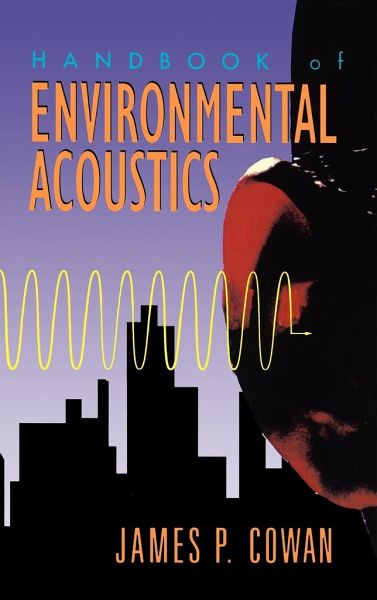
Handbook of Environmental Acoustics
Versandkostenfrei!
Versandfertig in über 4 Wochen
156,99 €
inkl. MwSt.

PAYBACK Punkte
78 °P sammeln!
Because environmental acoustics has a complex mathematical basis, it is often difficult to determine whether acoustical recommendations are valid. Handbook of Environmental Acoustics simplifies this decision-making process and provides easy-to-follow explanations of acoustic terminology, noise control design, and regulatory noise issues. The book clarifies key aspects of environmental noise in basic language, covering: * Common noise sources--including the risk of exposure to common daily environmental noise sources * Current noise regulations, guidelines, and standards--illustrating all key p...
Because environmental acoustics has a complex mathematical basis, it is often difficult to determine whether acoustical recommendations are valid. Handbook of Environmental Acoustics simplifies this decision-making process and provides easy-to-follow explanations of acoustic terminology, noise control design, and regulatory noise issues. The book clarifies key aspects of environmental noise in basic language, covering: * Common noise sources--including the risk of exposure to common daily environmental noise sources * Current noise regulations, guidelines, and standards--illustrating all key points * Acoustic terminology and environmental noise descriptors--providing a foundation for understanding noise issues * Effects of noise on people and animals--emphasizing the importance of restricting noise exposure * Relevant noise rating methods--clarifiying the use of noise metrics * Construction and building code requirements--explaining current requirements and featuring tips on how to avoid privacy problems * Measurement considerations--demonstrating standard methods and offering practical advice on how to ensure proper measurement procedures * Noise control designs--detailing source-path-receiver systems and noise control fundamentals In addition to traditional noise control methods, new areas, such as active noise control, sound intensity measurement, and diffusive designs, are explained. A sample municipal noise ordinance helps the user to draft an ordinance tailored to the needs of a particular community. Avoiding complex mathematics and analyses, Handbook of Environmental Acoustics is a user-friendly manual for urban planners, municipal officials, engineers, attorneys, industrial hygienists, architects, environmental professionals, and students in these fields.


